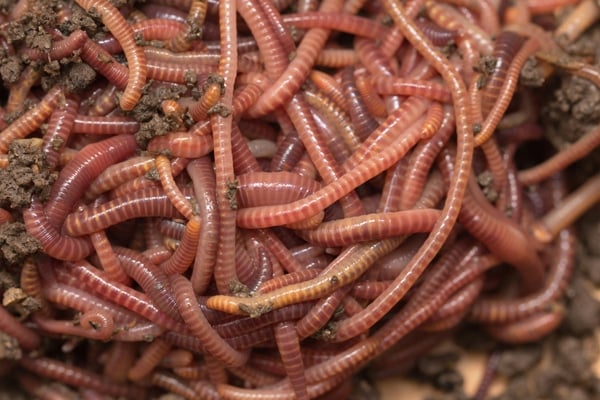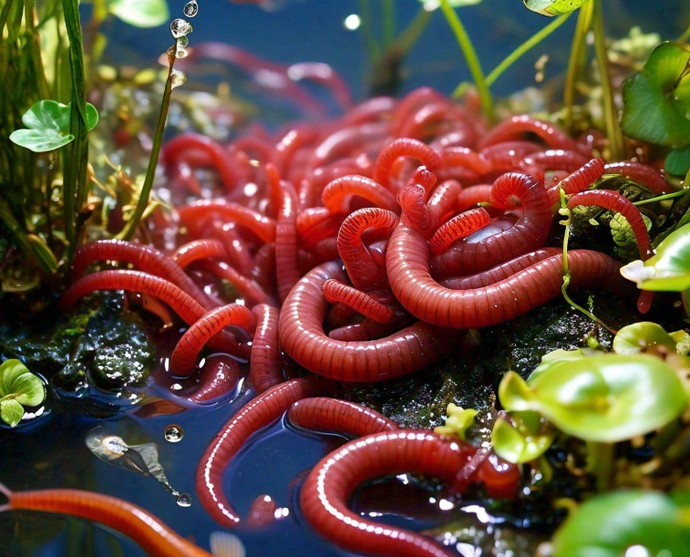Red wigglers: What you need to know
Red wigglers: What you need to know
Blog Article
Whatever You Need to Know Regarding Red Wigglers for Composting
Red wigglers, or Eisenia fetida, play a critical duty in the world of composting, changing organic waste into beneficial soil modifications. The process of establishing up a worm bin and keeping it can position challenges.
What Are Red Wigglers?

(red worms for sale)
Belonging To North America, red wigglers are surface-dwelling organisms that favor wet, cozy habitats rich in decomposing raw material. Their diet plan consists primarily of decomposing plant product, food scraps, and other organic particles, which they eat and break down effectively. As they digest this material, they generate nutrient-rich spreadings that enhance soil fertility.
Red wigglers are hermaphroditic, possessing both male and female reproductive organs, and can duplicate rapidly under optimal conditions. This ability makes them an optimal choice for composting systems, as their populace can enhance swiftly. Their durability and flexibility to various settings further strengthen their importance in lasting waste monitoring practices. On the whole, red wigglers are crucial factors to the procedure of recycling organic waste into beneficial compost.
Advantages of Making Use Of Red Wigglers
Making use of red wigglers in composting systems uses various benefits that improve both the effectiveness of waste management and the top quality of the resulting garden compost. These worms, clinically known as Eisenia fetida, are specifically efficient at breaking down raw material, turning cooking area scraps and backyard waste into nutrient-rich compost at a sped up price.
Among the primary benefits of utilizing red wigglers is their capability to take in huge amounts of natural material, typically refining their weight in food waste daily. This high usage rate causes quicker decay and reduces the volume of waste sent to garbage dumps. Moreover, the spreadings generated by red wigglers are abundant in vital nutrients, advantageous microbes, and enzymes, making them an exceptional plant food for yards and plants.
Furthermore, red wigglers grow in a variety of atmospheres, making them versatile for both indoor and exterior composting systems - red wigglers. Their presence in a garden compost container helps to aerate the material, protecting against odors and promoting a healthy composting procedure. Generally, utilizing red wigglers not only contributes to reliable waste monitoring but also supports sustainable gardening techniques with the production of high-grade garden compost
(red wiggler composting worms)
Establishing Your Worm Bin
To successfully establish a worm container, it is essential to choose an appropriate container that fulfills the demands of red wigglers while giving a favorable atmosphere for composting. An ideal container can be made from plastic, timber, or metal, with a capacity of at the very least 1 square foot for each extra pound of worms.
Make sure the container has ample drainage holes to stop excess wetness, as red wigglers prosper in a wet, but not water logged, setting. red wigglers. The container needs to also be aerated to offer adequate air flow, stopping anaerobic problems that might harm the worms
An ideal location for the worm bin is an awesome, dark location, without straight sunshine and severe temperature levels, as red wigglers favor a temperature level range of 55 to 77 levels Fahrenheit.
Prior to introducing the worms, prepare bed linen materials such as shredded newspaper, cardboard, or coconut coir, which will certainly give both habitat and food. Moisten the bedding gently to produce an inviting setting for the worms. Consider positioning a cover on the bin to maintain moisture and decrease parasites, while guaranteeing it can be quickly removed for upkeep.
Feeding and Treatment Guidelines
Feeding red wigglers is an important element of keeping a healthy composting system. These worms thrive on a varied diet, mainly composed of organic materials such as vegetables and fruit scraps, coffee premises, and smashed eggshells. It is necessary to prevent feeding them meat, dairy, and oily foods, as these can create undesirable smells and draw in insects.
When presenting food to your worm container, chop or shred products into smaller items to promote quicker decay. Begin with small quantities to determine the worms' usage rate, progressively enhancing the quantity as they adjust. It is a good idea to alternating feeding areas within the bin to urge extensive blending and aeration of the garden compost.

Troubleshooting Common Issues
Keeping a flourishing worm composting system can occasionally offer obstacles that need interest and troubleshooting. Common problems consist of an unpleasant smell, which typically shows overfeeding or the existence of anaerobic problems. To correct this, minimize the amount of food added and make certain correct aeration by mixing the bed linens material.
One more constant issue is the retreat of worms from the container. This can occur due to excessive wetness or improper ecological problems. On a regular basis examine the moisture levels, going for a damp but not soaked uniformity, and maintain optimal temperatures in between 60-80 ° F(15-27 ° C )to create a comfy environment for your red wigglers.
Parasites, such as fruit flies, can additionally attack worm bins. red wigglers. To combat this, cover food Source scraps with a layer of bedding or shredded paper to hinder flies from laying eggs. Additionally, make sure that any kind of food added is fresh and devoid of mold, which can attract undesirable insects
Finally, if your worms appear non-active, look for stress variables such as temperature level changes or poor dampness. Addressing these common problems will certainly assist preserve a healthy and balanced and efficient worm composting system.
Verdict
In recap, red wigglers, or Eisenia fetida, play a vital duty in sustainable waste administration with vermicomposting. Proper configuration and maintenance of a worm container, along with adherence to feeding standards, guarantee a thriving environment that reduces landfill contributions.
Report this page